The Model LD 8900 and LD 8900/R Goniometric Radiometers scan at an internal radius of 82.7mm, with collection angle of 0.87°, angular sampling increment ~0.5°, and a maximum angular FOV of ±72°, for Aperture-Source Distance Das = 0. If Das is increased, that is the source is positioned away from the aperture, then both the angular sampling increment and the FOV both decrease.
With NanoScan the spatial sampling can be very small, down to fractions of microns. This gives high precision in derived divergence angles. However, again, the drum scan does not match the path of a goniometric scan. At extreme angles the slit of finite thickness will vignette and thus truncate the image. Also, the light travels much farther for the extreme rays.
The NanoScan LA scanhead diagram shows the path for a slit aperture and the different photo detector sizes, 13mm Ge and 25mm Si. The dashed line shows the path of a goniometric scan, substantially different than that of the NanoScan. The diagram shows an extreme ray at 45° for an object placed at 3mm from the slit. An object placed 12.4mm from the drum can detect light from extreme rays only up to 25º. The limits to the FOV are due to vignetting by the slit aperture, and the 1/r2 reduction of signal amplitude. As the ray angle increases, these effects become more substantial.
To obtain accurate results one also needs to know the distance from the source to the scan plane. The position tolerance will be more critical for a source at 3mm versus 12 mm. It is for these reasons that Ophir-Spiricon recommends using the Goniometric Radiometer to measure highly divergent sources such as custom fibers.
Measurements performed on bare fibers utilize the Bare Fiber Adapter Plate, shown below mounted on an LD 8900R. Typically, the orientation of the mounted fiber is random, so for custom elliptical configurations the direction of the principal major and minor axes is unknown. Thus the ϕ=0° and ϕ=90°scans of the Goniometric Radiometer will not capture the principal axis profiles. It is therefore necessary to do a 3D scan to obtain the principal axes profiles. This is shown in the GUI screenshot below. The direction of the principal axes is clearly seen from the 3D and Topographic View profiles. A powerful feature of the software is the Computed Cross Sections analysis, which generates profiles through arbitrary regions of the beam angular distribution. In this case, the profiles of interest are the principal axes of the distribution through the centroid. Once the direction of the axes is known, it is possible to set the azimuth scan angles to those directions so that profiles can be acquired in the Perpendicular Axes Mode, without the need to do a full 3D scan. The profiles for these three cases are shown below.
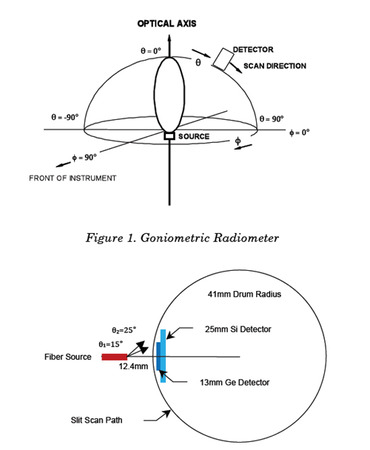
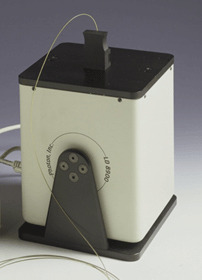
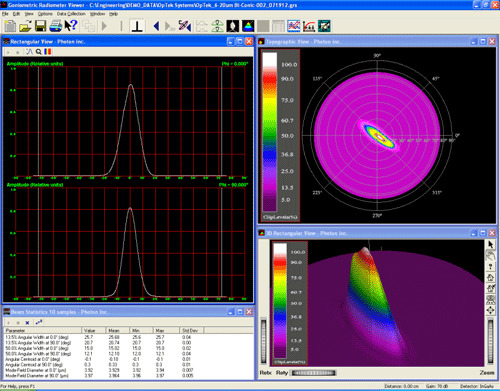
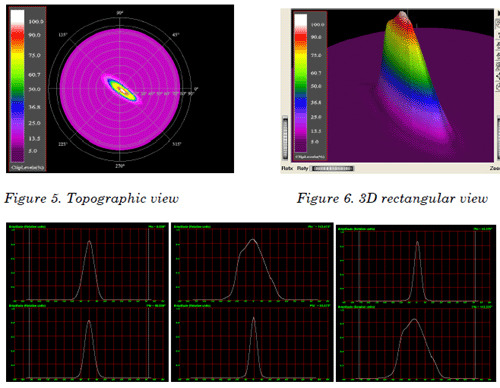
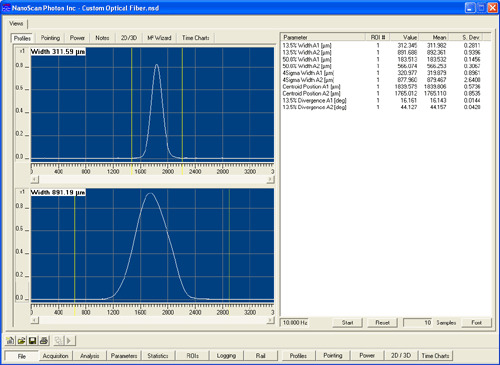
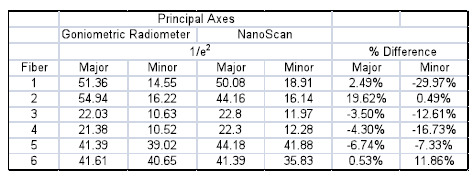

 Ultra-High Velocity
Ultra-High Velocity